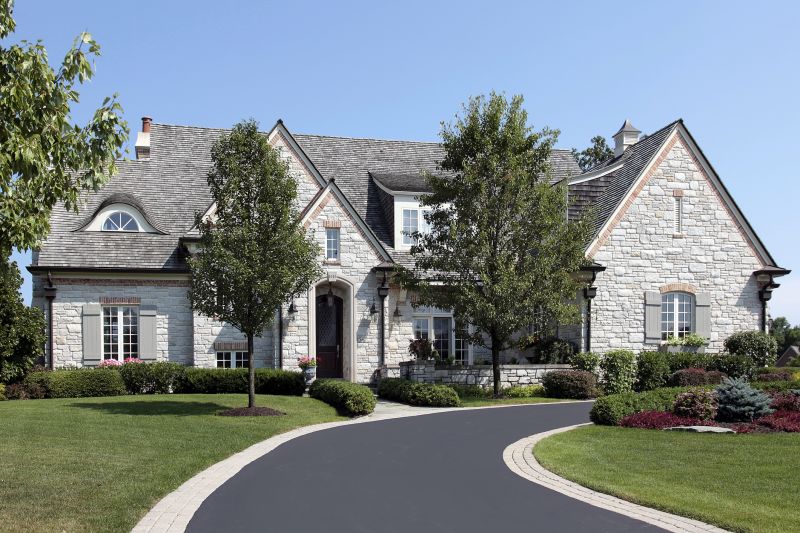Popular Driveway Stone Installation Products For Professional Results
Find out which products are favored by experts for creating a sturdy and attractive driveway with ease.
 Creating a durable and visually appealing driveway with stone installation requires selecting the right products tailored to your specific needs. From foundational materials to surface finishes, the variety of options available ensures that homeowners can find suitable solutions for different styles and budgets. Proper selection and installation of these products can contribute to a stable, long-lasting driveway that enhances curb appeal. Whether constructing a new driveway or upgrading an existing one, understanding the key components involved is essential.
Creating a durable and visually appealing driveway with stone installation requires selecting the right products tailored to your specific needs. From foundational materials to surface finishes, the variety of options available ensures that homeowners can find suitable solutions for different styles and budgets. Proper selection and installation of these products can contribute to a stable, long-lasting driveway that enhances curb appeal. Whether constructing a new driveway or upgrading an existing one, understanding the key components involved is essential.
Top Overall Option
Crushed Stone Base Layer
A high-quality crushed stone base layer is fundamental for creating a stable and well-draining driveway. It provides foundational support that can accommodate various surface materials and withstand traffic loads. Selecting the right size and type of crushed stone ensures proper compaction and longevity of the installation.
Types of Products For Driveway Stone Installations
Crushed Stone
Various sizes of crushed stone are used for base layers, drainage, and decorative surfaces, offering versatility for different driveway styles.
Gravel
Clean gravel provides excellent drainage and is often used as a top layer or for filling gaps between stones.
Pavers
Interlocking pavers come in various shapes and colors, creating a customizable and durable surface for driveways.
Concrete Blocks
Concrete blocks offer a solid, uniform surface and are suitable for creating structured driveway layouts.
Landscape Edging
Edging materials help contain stones and prevent shifting, maintaining the driveway's shape over time.
Joint Fillers
Materials like polymeric sand or gravel stabilize the stones and reduce weed growth between joints.
Sealants
Sealants protect the surface from stains and weathering, extending the lifespan of the driveway.
Geotextile Fabric
This fabric provides additional stability by preventing weed growth and mixing of subsoil with base materials.
Sand
Fine sand is used to level surfaces and fill gaps between stones or pavers.
Drainage Pipes
Drainage pipes help manage water runoff and prevent pooling or erosion around the driveway.
Edge Restraints
Restraints keep stones in place, especially along curves and edges, maintaining a clean appearance.
Leveling Tools
Tools like screeds and rakes assist in achieving an even and compacted surface during installation.
Popular Choices
Widely used for base layers, it offers stability and drainage for various driveway types.
Small, rounded gravel that provides a smooth surface and is often chosen for decorative purposes.
Popular for their ease of installation and design flexibility, creating attractive driveway surfaces.
Durable and low-maintenance, these pavers are favored for their uniform appearance.
Used to fill joints between stones or pavers, it helps prevent weed growth and shifting.
Aesthetic and functional, these stones define the driveway boundary and contain materials.
Specially graded gravel designed to facilitate water runoff and prevent pooling.
Applied to protect surface materials from stains and weather damage, enhancing longevity.
Provides stabilization beneath the stone layers, reducing weed infiltration and shifting.
Used as a base layer beneath stones or pavers for leveling and stability.
Essential for managing water flow and preventing erosion around the driveway.
A decorative and permeable surface option that binds gravel for a smooth finish.
A successful driveway stone installation often begins with a solid base layer that provides stability and drainage. Crushed stone or gravel layers are commonly used to create a level foundation that supports the surface material. Over this base, various types of stones or pavers can be laid to achieve the desired aesthetic. The choice of surface material influences not only the appearance but also the maintenance requirements and durability of the driveway.
In addition to the primary stones, accessories such as edging, joint fillers, and sealants play a vital role in maintaining the integrity of the installation. Edging helps contain the stones and prevents shifting over time, while joint fillers can stabilize the stones and reduce weed growth. Sealants may be applied to protect the surface from weathering and staining, extending the lifespan of the driveway. Properly selecting and applying these auxiliary products can significantly improve the overall performance of the driveway installation.
Investing in quality products and understanding their specific functions ensures a more successful project. While the process involves multiple steps, using the right materials can make the installation smoother and result in a driveway that meets aesthetic and functional expectations for years to come.
Key Buying Considerations
- Determine the primary purpose of your driveway to select appropriate materials.
- Consider the load-bearing capacity needed based on vehicle types and frequency of use.
- Evaluate drainage requirements to prevent water pooling and erosion.
- Choose materials that complement your property's aesthetic and surrounding landscape.
- Assess the climate conditions, including freeze-thaw cycles, which can affect material durability.
- Review the ease of installation and whether professional help is recommended.
- Factor in maintenance needs, such as sealing or weed control, over time.
- Select materials that are compatible with existing structures or landscaping features.
- Consider budget constraints while balancing quality and longevity.
- Look for options that offer flexibility in design for future modifications or expansions.
- Check for availability of auxiliary products like edging, joint fillers, and sealants.
- Ensure the materials are suitable for the subsoil and base layers planned for your project.
- Evaluate environmental factors, such as the potential for shifting or settling over time.
This page contains affiliate links. We may earn a commission from qualifying purchases, which helps support our content and recommendations.
